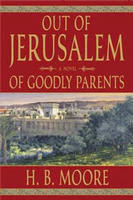By Heather B. Moore
Finding peace in our lives may sometimes seem impossible as we struggle with disappointments, broken hearts, illness, death of a loved one, or financial problems.
President Heber J. Grant outlived many members of his immediate family, including his parents, his first wife, Lucy, his only two sons, then later his second wife, Emily, and then his daughter.
His wife, Lucy, suffered a long illness and just an hour before her death he called his children into the room. He told them it was time to say goodbye to their mother. One of his daughters, about 12 years old, said that she wanted him to lay his hands upon her mother and heal her, as he had done to relieve her pain in the past.
President Grant tried to assure his daughter that it was her mother’s time to go. When the children left the room, he knelt and prayed, telling the Lord that he acknowledged His hand in life, in death, in joy, in sorrow, in prosperity, or adversity. He was grateful that his wife belonged to him for all eternity, and that the power and authority of the priesthood had been restored. Then he prayed that his little girl would acknowledge that it was God’s will that her mother should die.
After Lucy passed away, President Grant called the children back into the room. His 5-year old son was weeping bitterly when his 12-year old daughter said, “Do not weep, do not cry, Heber; since we went out of this room the voice of the Lord from heaven has said to me, ‘In the death of your mamma the will of the Lord shall be done.’”
Later, before a congregation, President Grant said, “Tell me, my friends, that I do not know that God hears and answers prayers! Tell me that I do not know that in the hour of adversity the Latter-day Saints are comforted and blessed and consoled as no other people are!” (Teachings of Presidents of the Church: Heber J. Grant, 43)
Through prayer, we can find peace and learn to accept the Atonement in our lives. Often trials are unexpected, and we are overwhelmed with the change of events—we lose sleep, our appetites, and are at a loss for a solution. The following quote refers to the trial of losing a loved one, but can be applied to much more:
President Monson said, “Frequently, death comes as an intruder. . . . Death lays its heavy hand upon those dear to us and, at times, leaves us baffled and wondering. In certain situations, as in great suffering and illness, death comes as an angel of mercy. But to those bereaved, the Master’s promise of peace is the comforting balm which heals: “peace I leave with you, my peace I give unto you: not as the world giveth, give I unto you. Let not your heart be troubled, neither let it be afraid”(John 14:27) (“Finding Peace,” Ensign, Mar. 2004, 6–7).
As members of the LDS church, we’ve been given additional knowledge of the cycle of life through the plan of salvation. We know that our trials are short in comparison to the eternal realm. But if we are searching for worldly peace or worldly solutions for our trials, we’ll find little comfort.
The Savior said, “I am the resurrection, and the life. He that believeth in me, though he were dead, yet shall he live: And whosoever liveth and believeth in me shall never die”(John 11:25–26).
The Savior took upon Himself the Atonement so that we might have hope, that we might overcome our trials, be forgiven and washed clean time and time again, in order to live with Him.
Neal A. Maxwell said, “Trying to comprehend the trials and meaning of this life without understanding Heavenly Father’s marvelously encompassing plan of salvation is like trying to understand a three-act play while seeing only the second act” (“Enduring Well,” Ensign, Apr. 1997, 7).
We need to trust in the Atonement and accept what the Savior has so freely offered us. Only then can we be made whole, as Isaiah clarified: “Surely he hath borne our griefs, and carried our sorrows. . . . And with his stripes we are healed” (Isa. 53:4–5; emphasis added).
The hardships and trials of this life will pass, and the time will come when we “shall stand up in the presence of the living God, filled with joy and peace and satisfaction" (Teachings of Presidents of the Church: Heber J. Grant, 46).
Monday, November 1, 2010
Tuesday, May 11, 2010
Books for Women

 Well, and for men, but here is a list of some excellent new releases that are clean fiction and provide a compelling read.
Well, and for men, but here is a list of some excellent new releases that are clean fiction and provide a compelling read.Band of Sisters by Annette Lyon
Courting Miss Lancaster by Sarah M. Eden
Devils Food Cake by Josi S. Kilpack
The Golden Spiral by Lisa Mangum
The Cross Gardener by Jason F. Wright
Abish by KC Grant
Imprints by Rachel Ann Nunes
Gravity Vs the Girl by Riley Noehren
Are Mormon Women Oppressed?
I had an interesting book signing last night. I was at the Orem Costco, sitting right across the aisle from the Jello chocolate mousse. I'd eaten dinner, but the visual of all that food was making me hungry again. Otherwise . . . I had some very interesting conversations with people about the Book of Mormon, etc. The most interesting conversation was when a woman rushed up to me. She had seen my poster at the front door of Costco. It turns out she was looking for a book on "Muslim" women, not "Mormon" women.
She said she didn't want to read about Mormon women because we were oppressed. She left Utah and returned 45 years later to find that Mormon women weren't respected. I don't know if I had my best thinking cap on but I replied, "If a woman demands respect, she'll get it. It doesn't matter what religion she practices."
I asked her what religion she was and she said she was Catholic. I told her she might be interested in my chapter on Eve since the LDS view of Eve is unique from all other religions. She said that she'd prefer to believe as the Catholics do about Eve. In the foreword of my book, Dr. Kaye Terry Hanson discusses just that--the differences between our viewpoint on the Fall and Eve's role in it versus the viewpoint that comes from other religions.
The woman went her way, but it left me thinking about our conversation all night. I wondered if the world sees Mormon women as oppressed for one reason or another. I don't feel oppressed. I've felt burned out at various times, but that's had nothing to do with my religious beliefs. I'm proud of being a woman, of being a Mormon, and of being an active member of the church. When I was at BYU Women's Conference last week, I climbed on a bus to ride from the parking lot to the Wilkinson Center. I didn't know a soul on the crowded bus, but everyone was smiling. I literally felt the power and goodness of these women and sensed that together they could accomplish anything. The immediate comraderie of these dozens of women was incredible, all coming together in one purpose, who had left their families and homes for a few days to learn about strengthening their families, developing new friendships, growing their testimonies of the Savior, and sharing their talents.
Tuesday, March 16, 2010
Visiting Teaching . . . Again?
Visiting teaching is hard, isn’t it? It seems that the month zooms by and suddenly there are only two days left. You might worry, “Will Sister Sorenson notice that I’m calling on the 29th, and will she notice the edge of persuasion in my voice when I ask her, quite firmly, if I can stop by tomorrow?”
What is it about visiting teaching deadlines? Why do we operate on a 30-day cycle? Are we saleswomen trying to achieve our monthly sales quota? Why are there visiting teaching coordinators who bug us the first week of the following month and ask for our report? Have you ever said, “Sure, I visited with her . . .” then mumbled, “for 10 seconds in the church hallway”?
What’s the big deal? Miss a few days, miss a few weeks, a month or two. You see the sisters you visit teach around the neighborhood. They have a smile on their face at church. So everything is fine, right? Besides, you don’t have time for visiting teachers to come to your house, so you’re pretty sure that your assigned sisters feel the same way.
For several years, I visit taught the same woman, although I’d gone through three different partners. We’d become good friends, and our appointments lasted at least an hour as we each caught up on our lives. Once in awhile, when I’d show up she wouldn’t be there. So if rescheduling didn’t work, I’d drop off a plant with a note, or a treat. Without an active partner, it became harder to stay accountable. Then one time I set up an appointment and forgot to go. She called me an hour after the set time and asked if I was coming. I apologized and said I could come right over, but she had to leave.
The next couple of weeks sped past and one day she called me. We chatted for a few minutes and then she became emotional. Some kids had at school had been giving her daughter a hard time. She really needed someone to talk to about it because she didn’t know how to deal with it or how to counsel her daughter. When we hung up from the conversation, I felt sad. Not just about her daughter, but because the one month I had missed was the one month that she needed me the most.
I started to see the wisdom of the monthly appointments. They aren’t meant to bog down our life. They are meant to develop friendships and relationships of trust. They are meant to teach us service—not at our convenience, but within the guidelines that the Lord has sent forth.
Visiting teaching is a great responsibility. We are bringing the message of Christ to our sisters. We are forging friendships that will last into eternity. We are serving in the most important capacity that is possible—but most importantly, we are saving souls. We need to find the time. Service takes time, and despite our busy lives, it should be a priority.
In the words of Sheri Dew, “It is vital that we, the sisters of Relief Society, learn to hear the voice of the Lord . . . the Holy Ghost blesses us with optimism and wisdom at times of challenge that we simply cannot muster on our own. No wonder that one of the adversary's favorite tactics among righteous LDS women is busyness—getting us so preoccupied with the flurry of daily life that we fail to immerse ourselves in the gospel of Jesus Christ. Sisters, we can't afford not to seek the things of the Spirit! There is too much at stake. Too many people are depending on us as mothers, as sisters, leaders, and friends.” (October 1998 General Relief Society Conference)
The women we have been called to visit teach need to know that they are our friends. That they can call us. That they can ask favors. That they know we will be happy to help. That they know we love them.
Marjorie P. Hinckley said, “Sisters, we are all in this together. We need each other . . . Those of us who are old need you who are young. And, hopefully, you who are young need some of us who are old. It is a sociological fact that women need women. We need deep and satisfying and loyal friendships with each other. These friendships are a necessary source of sustenance. We need to renew our faith every day. We need to lock arms and help build the kingdom so that it will roll forth and fill the whole earth.” (Glimpses, 254–255)
What is it about visiting teaching deadlines? Why do we operate on a 30-day cycle? Are we saleswomen trying to achieve our monthly sales quota? Why are there visiting teaching coordinators who bug us the first week of the following month and ask for our report? Have you ever said, “Sure, I visited with her . . .” then mumbled, “for 10 seconds in the church hallway”?
What’s the big deal? Miss a few days, miss a few weeks, a month or two. You see the sisters you visit teach around the neighborhood. They have a smile on their face at church. So everything is fine, right? Besides, you don’t have time for visiting teachers to come to your house, so you’re pretty sure that your assigned sisters feel the same way.
For several years, I visit taught the same woman, although I’d gone through three different partners. We’d become good friends, and our appointments lasted at least an hour as we each caught up on our lives. Once in awhile, when I’d show up she wouldn’t be there. So if rescheduling didn’t work, I’d drop off a plant with a note, or a treat. Without an active partner, it became harder to stay accountable. Then one time I set up an appointment and forgot to go. She called me an hour after the set time and asked if I was coming. I apologized and said I could come right over, but she had to leave.
The next couple of weeks sped past and one day she called me. We chatted for a few minutes and then she became emotional. Some kids had at school had been giving her daughter a hard time. She really needed someone to talk to about it because she didn’t know how to deal with it or how to counsel her daughter. When we hung up from the conversation, I felt sad. Not just about her daughter, but because the one month I had missed was the one month that she needed me the most.
I started to see the wisdom of the monthly appointments. They aren’t meant to bog down our life. They are meant to develop friendships and relationships of trust. They are meant to teach us service—not at our convenience, but within the guidelines that the Lord has sent forth.
Visiting teaching is a great responsibility. We are bringing the message of Christ to our sisters. We are forging friendships that will last into eternity. We are serving in the most important capacity that is possible—but most importantly, we are saving souls. We need to find the time. Service takes time, and despite our busy lives, it should be a priority.
In the words of Sheri Dew, “It is vital that we, the sisters of Relief Society, learn to hear the voice of the Lord . . . the Holy Ghost blesses us with optimism and wisdom at times of challenge that we simply cannot muster on our own. No wonder that one of the adversary's favorite tactics among righteous LDS women is busyness—getting us so preoccupied with the flurry of daily life that we fail to immerse ourselves in the gospel of Jesus Christ. Sisters, we can't afford not to seek the things of the Spirit! There is too much at stake. Too many people are depending on us as mothers, as sisters, leaders, and friends.” (October 1998 General Relief Society Conference)
The women we have been called to visit teach need to know that they are our friends. That they can call us. That they can ask favors. That they know we will be happy to help. That they know we love them.
Marjorie P. Hinckley said, “Sisters, we are all in this together. We need each other . . . Those of us who are old need you who are young. And, hopefully, you who are young need some of us who are old. It is a sociological fact that women need women. We need deep and satisfying and loyal friendships with each other. These friendships are a necessary source of sustenance. We need to renew our faith every day. We need to lock arms and help build the kingdom so that it will roll forth and fill the whole earth.” (Glimpses, 254–255)
Tuesday, February 2, 2010
A Month of Love
With the focus on Valentines Day during the month of February, we are reminded of one of the greatest commandments, to love one another as the Savior loves us. How can we truly understand the love the Savior has for each of us? We must learn about the Savior in order to love Him.
“What does Jesus look like?” my children have often asked. Like most “LDS homes” we have various pictures of the Savior on our walls. Popular LDS artists depict him in a similar fashion—with those warm brown eyes, the sculpted, yet soft jaw-line, the kindness and understanding emulating from the picture . . .
We might have pictures of the Savior in our homes, as well as His words in scripture on our end tables, but do we truly see him, and have we found Him inside our hearts?
At the age of sixteen, my family moved from Orem, Utah, to Jerusalem, Israel. My father had been given an assignment to teach in the BYU Jerusalem Center. We lived in a three bedroom apartment near the Mount of Olives and each day my younger brother and sister and I took a city bus to school.
Over the course of a year, we got to know the bus driver. He spoke some English and would make the effort to chat with us, the American kids. It didn’t take him long to figure out that we were Mormons. The year was 1987 and the Jerusalem Center had undergone some controversy by the local Jewish community when it was being built—including staged protesting. Some of the leftover evidence came in the form of bumper stickers that we saw on cars that read: Mormons Go Home.
Despite the negative feelings of some Israeli citizens towards the Mormons, it seemed the bus driver was curious and open-minded. Some months into our stay in Israel, he started asking us about our Church. We, of course, could not proselyte, so our answers were very sterile. Then he asked about the Book of Mormon, and regrettably we could tell him nothing and we could not even give him one. Still, he was amiable and friendly, even waiting for us when we late and sprinting for the bus.
Now, many years later, I think of that bus driver who wanted to know more about the Savior, but there were obstacles preventing him from learning, and from me teaching. As Christmas approaches this year, I think of the obstacles that may prevent me from drawing closer to my Savior. Or even the obstacles that may prevent me from teaching those around me, specifically my children, more about the Savior.
One of my greatest challenges in life is managing my time. Like many of you, I am balancing many things, including writing, editing, family, church, and community responsibilities. Where can I fit in yet another relationship? One with Heavenly Father, and His Son, Jesus Christ? Yes, I have reminders on the walls of my home, and in the pages of the scriptures that I read on a regular basis. But am I really seeing Him?
Because of the opportunity to live in Israel, I have walked where the Savior walked. I have visited the Garden tomb, surrounded by milling tourists, and tried to imagine the place in Christ’s day. I have looked at the stone slab where his body was laid out and thought about the coldness of the cave and the hardness of the stone.
I have wandered among the olive trees in the Garden of Gethsemane—those ancient trees that the Savior Himself had walked among, before falling to the ground and taking upon Him the sins of the world.
I have stood above the Central Bus Station on Golgotha—the site of the Crucifixion, surrounded by the modern sounds of living, and thought back to a time of quiet, a time when one innocent man gave up his life for the salvation of all men.
Yet, it does not matter whether I’ve visited the physical places where the Savior spent the moments leading up to the Atonement. Regardless of whether or not I am in my Utah home looking at a picture of the Savior or standing in front of the Garden Tomb, I must come to see who the Savior truly is.
With all the surrounding busyness of life, the Savior needs to become my anchor, but there is only one way to do that. Learn of Him. And this takes time and effort. As we are reminded to show our love for others this February, let us push aside the obstacles that prevent us from truly seeing our Savior. Let us pause and ponder. Look beyond the artist depiction of a man, but into the heart of the Savior, and the love He has for each of us.
To subscribe to YourLDSNeighborhood on-line newsletter please CLICK HERE.
“What does Jesus look like?” my children have often asked. Like most “LDS homes” we have various pictures of the Savior on our walls. Popular LDS artists depict him in a similar fashion—with those warm brown eyes, the sculpted, yet soft jaw-line, the kindness and understanding emulating from the picture . . .
We might have pictures of the Savior in our homes, as well as His words in scripture on our end tables, but do we truly see him, and have we found Him inside our hearts?
At the age of sixteen, my family moved from Orem, Utah, to Jerusalem, Israel. My father had been given an assignment to teach in the BYU Jerusalem Center. We lived in a three bedroom apartment near the Mount of Olives and each day my younger brother and sister and I took a city bus to school.
Over the course of a year, we got to know the bus driver. He spoke some English and would make the effort to chat with us, the American kids. It didn’t take him long to figure out that we were Mormons. The year was 1987 and the Jerusalem Center had undergone some controversy by the local Jewish community when it was being built—including staged protesting. Some of the leftover evidence came in the form of bumper stickers that we saw on cars that read: Mormons Go Home.
Despite the negative feelings of some Israeli citizens towards the Mormons, it seemed the bus driver was curious and open-minded. Some months into our stay in Israel, he started asking us about our Church. We, of course, could not proselyte, so our answers were very sterile. Then he asked about the Book of Mormon, and regrettably we could tell him nothing and we could not even give him one. Still, he was amiable and friendly, even waiting for us when we late and sprinting for the bus.
Now, many years later, I think of that bus driver who wanted to know more about the Savior, but there were obstacles preventing him from learning, and from me teaching. As Christmas approaches this year, I think of the obstacles that may prevent me from drawing closer to my Savior. Or even the obstacles that may prevent me from teaching those around me, specifically my children, more about the Savior.
One of my greatest challenges in life is managing my time. Like many of you, I am balancing many things, including writing, editing, family, church, and community responsibilities. Where can I fit in yet another relationship? One with Heavenly Father, and His Son, Jesus Christ? Yes, I have reminders on the walls of my home, and in the pages of the scriptures that I read on a regular basis. But am I really seeing Him?
Because of the opportunity to live in Israel, I have walked where the Savior walked. I have visited the Garden tomb, surrounded by milling tourists, and tried to imagine the place in Christ’s day. I have looked at the stone slab where his body was laid out and thought about the coldness of the cave and the hardness of the stone.
I have wandered among the olive trees in the Garden of Gethsemane—those ancient trees that the Savior Himself had walked among, before falling to the ground and taking upon Him the sins of the world.
I have stood above the Central Bus Station on Golgotha—the site of the Crucifixion, surrounded by the modern sounds of living, and thought back to a time of quiet, a time when one innocent man gave up his life for the salvation of all men.
Yet, it does not matter whether I’ve visited the physical places where the Savior spent the moments leading up to the Atonement. Regardless of whether or not I am in my Utah home looking at a picture of the Savior or standing in front of the Garden Tomb, I must come to see who the Savior truly is.
With all the surrounding busyness of life, the Savior needs to become my anchor, but there is only one way to do that. Learn of Him. And this takes time and effort. As we are reminded to show our love for others this February, let us push aside the obstacles that prevent us from truly seeing our Savior. Let us pause and ponder. Look beyond the artist depiction of a man, but into the heart of the Savior, and the love He has for each of us.
To subscribe to YourLDSNeighborhood on-line newsletter please CLICK HERE.
Subscribe to:
Posts (Atom)












